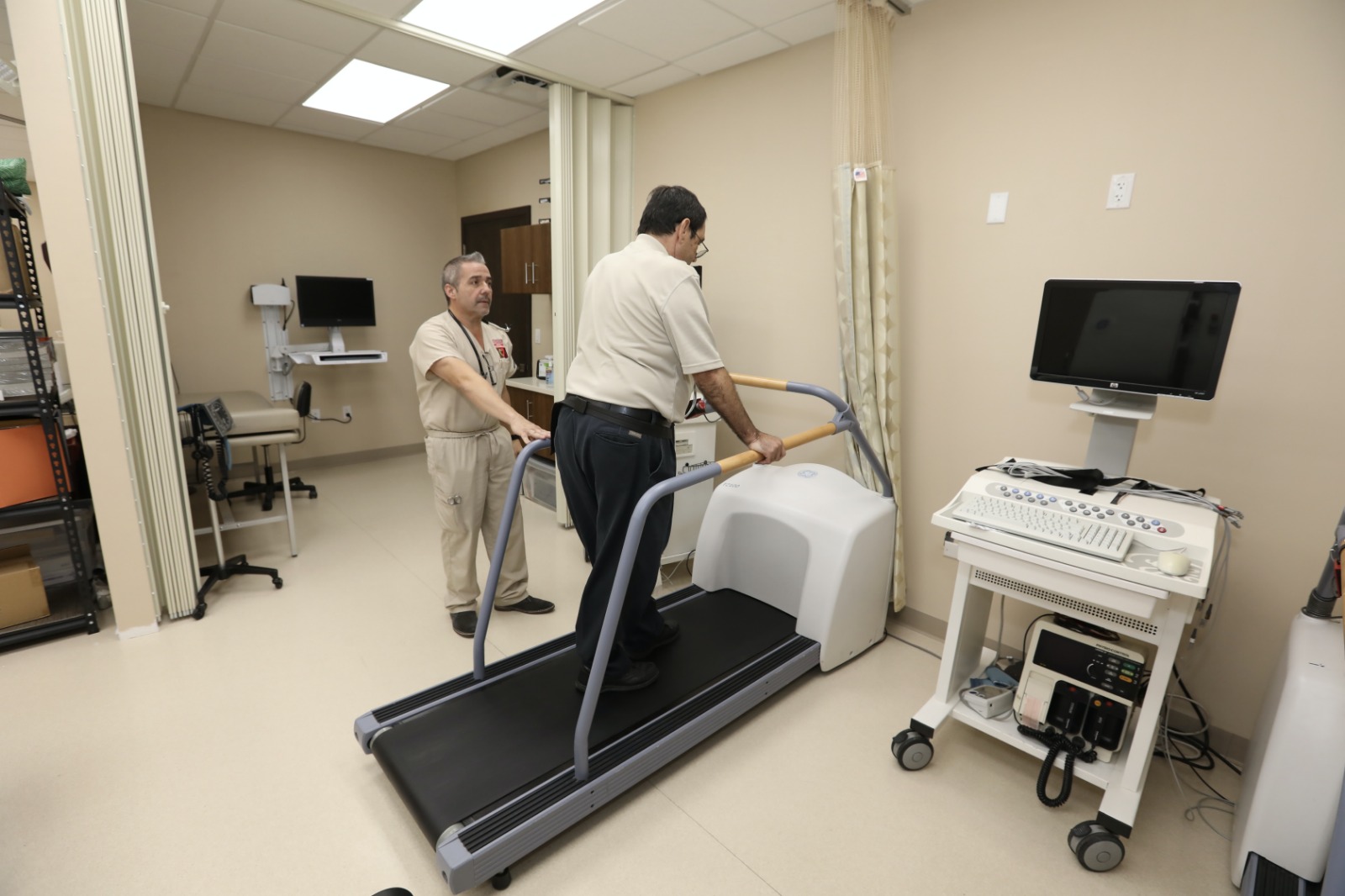A stress test, sometimes called a treadmill
test or exercise test, helps a doctor find out how well your heart
handles work. As your body works harder during the test, it requires
more oxygen, so the heart must pump more blood. The test can show if the
blood supply is reduced in the arteries that supply the heart. It also
helps doctors know the kind and level of exercise appropriate for a
patient.
A person taking the test:
- is hooked up to equipment to monitor the heart.
- walks slowly in place on a treadmill. Then the speed is increased
for a faster pace and the treadmill is tilted to produce the effect of
going up a small hill.
- may be asked to breathe into a tube for a couple of minutes.
- can stop the test at any time if needed.
- afterwards will sit or lie down to have their heart and blood pressure checked.
Heart rate, breathing, blood pressure, electrocardiogram (ECG or EKG), and how tired you feel are monitored during the test.
Healthy people who take the test are at very little risk. It's about the
same as if they walk fast or jog up a big hill. Medical professionals
should be present in case something unusual happens during the test.
A physician may recommend an exercise stress test to:
- Diagnose coronary artery disease
- Diagnose a possible heart-related cause of symptoms such as chest pain, shortness of breath or lightheadedness
- Determine a safe level of exercise
- Check the effectiveness of procedures done to improve coronary artery circulation in patients with coronary artery disease
- Predict risk of dangerous heart-related conditions such as a heart attack
- Depending on the results of the exercise stress test, the physician
may recommend more tests such as a nuclear stress test or cardiac
catheterization

